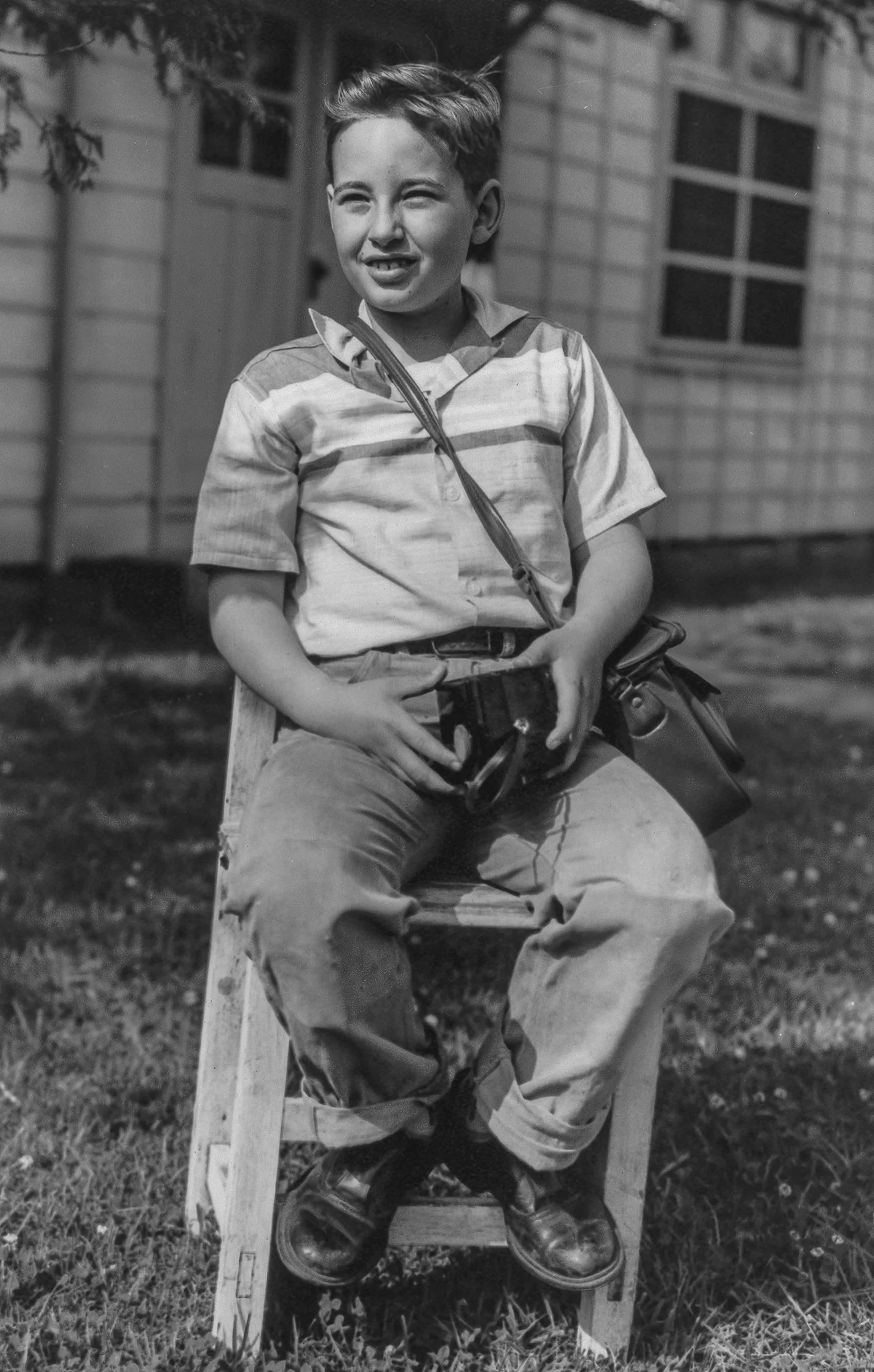Japan 1958
Early 50’s in Baltimore I started with a Cub Scout camera (with flash attachment), 620 film, the vanilla world of Verichrome Pan, a film manufactured for the consumer photographer (which I was), tolerant of broad exposure range, but lacking in character.
Late 50’s in Japan (a great time to live there, if only I’d known), taking a summer program for military kids, I was tutored by a Japanese photographer (who took this picture the first day of class), added 35mm, 120, and Tri-x to my vocabulary. The rudiments of creative thinking began to creep into my visual self, the first period when I actually remember working toward some kind of artistic end.
A woman named Kitty worked for the family that year in domestic capacity, we all liked her, gentle and thoughtful. As we were parting from her the last time, before returning to the states, Mom whispered into my ear, “why don’t you give Kitty your old box camera?” She wept over the gift (remember, 1960 Japan, not that long after WWII). I’m glad I did, not only for Kitty, but it freed me from cameras which had no controls.
VA TECH 1976
In high school, I photographed for the yearbook, continuing pursuit of a personal vision, using my father’s Kodak Retina II (clunky and not at all automatic, like the recently introduced first Nikon F). I did my processing/printing in the basement.
US Army 1965 - 1968, photography, again - with different vision and purpose. I used the 4x5 format for the first time, and learned a lot about optics, equipment, and film / chemistry. I was retained as an instructor after my second class, in Photo Lab, which put me in close association with others having much more knowledge and experience.
Following military service, I worked in a downtown Washington DC high end professional photography store - still discerning the direction, and finding Leica. (More about that below.)
Architecture education from 1970 - 5 years, another reshaping of vision - with intention blended, maturity proceeded where necessary.
Teaching photography for 3 years at VA TECH College of Architecture, some expansion in thought. Photography (all analog then) was seen as a correlative process, contributing to the creative process nurtured by the design program. The link between these disciplines influences me now. I’ve always been grateful of the pure luck of finding myself in that program at that time, and being encouraged to do primarily photography.
When I arrived at VA TECH in January of 1970, I had 2 Leica M2’s and the classic set of Summicron Lenses; 35mm, 50mm, and 90mm, purchased used just before leaving for school. I became good friends with a classmate, Tom, who we called “Terry”, who shot with a Nikon. During these years, shooting and printing side by side in the darkroom, Terry accrued a keen appreciation for Leica optics and years later, after becoming a successful transportation engineer (neither of us practiced architecture), he invested in Leica equipment (M4’s and lenses). We kept in touch over the years, and on my last visit to see him, just before he passed away prematurely, he gave me his Leica system, noting that I was the reason he had it at all. I’ve added to it and it is now my primary camera system.
Richmond, 2022
A True Story
(1970, VPI College of Architecture, 1st year lab, Spring evening):
Tom Quigley, first year student, “Mister. Ferrari - what is an image?”
Olivio Ferrari, professor, drifting through the design lab, stops at the doorway,
“Meester Quigley -
“I am trying - for 25 years -
to discover, ‘wot is image’,
and in one minute -
you want me to tell you, ‘wot is image?’
But he did tell us something.
The Image
Expression (articulated in the vocabulary of grays)
Driven by the effort -
The aspect for the fact
The semantic for the pragmatic
The emphasis for the data
The effort is to go for Communication -
and try for Beauty -
Balancing awareness of the technical and the interpretive.
Remembering: conditions prevailing at the time of image capture may not support the emphasis.
“For technical data -
the camera was faithfully used.” -
Minor White
If you’re interested in George’s work, feel free to contact him via the form. He has no mechanism in place to collect contact info from folks who use this method to contact him.



